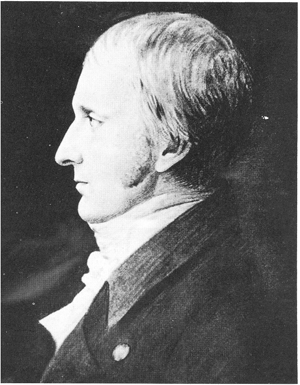Thomas Wedgwood (photographer)

Thomas Wedgwood (14 May 1771 – 10 July 1805), son of Josiah Wedgwood, the potter, was an early experimenter with Humphry Davy in photography though he was unable to permanently fix the image.
He was also a friend of the poet Samuel Taylor Coleridge and arranged for him to have an annuity of £150 in 1798 so Coleridge could devote himself to philosophy and poetry.
He never married and had no children.
Thomas Wedgwood born in May 1771 in Etruria, Staffordshire. Wedgwood is credited with a major contribution to technology for being the first man to think of a method to copy visible images chemically to permanent mediums. In 1802, Wedgwood devised a method of chemically staining an object’s silhouette to paper by coating the paper with silver nitrate and exposing the paper, with the object on top, to natural light, then preserving it in a dark room. This event was, essentially, the birth of photography as we know it today.
An acquaintance of Wedgwood’s, Humphry Davy, published an article in London’s Journal of the Royal Institution, titled “An Account of a Method of Copying Paintings upon Glass, and of Making Profiles, by the Agency of Light upon Nitrate of Silver. Invented by T.Wedgwood, Esq.” It detailed Wedgwood’s procedures and accomplishments and prompted further attempts to permanently record real images over the next forty years, until the perfection of a fixing agent.
Wedgwood’s work directly influenced other scientists delving into the craft of photography. For example, J. B. Reade's research in the 1830's was directly influenced by knowledge of Wedgwood's procedure of tanning the leather for his prints. Tanning the paper was discovered to be helpful by shrinking the size of the silver nitrate grains.
As a young adult, Wedgwood became interested in the best method of educating children, and spent time studying infants. From his observations, he concluded that most of the information that young brains absorbed came through the eyes, and were thus related to light and pictures. His attempts to create permanent pictures created by the use of light might have been an attempt to aide in the improvement of teaching.
Wedgwood was born into a long line of potters, and was instilled from youth with a love for art. He also spent much of his short life associating with painters, sculptors, and poets. In his experiments with light, he used ceramic pots coated with silver nitrate as well as treated paper and white leather as mediums of print, and had the most success with the white leather. Although he originally tried to create images with a “camera obscura,” his attempts were unsuccessful. His major achievements were the printing of an object’s profile through direct contact with the treated paper, thus creating an image’s shape on paper, and, by a similar method, copying transparent paintings-on-glass through direct contact and exposure to sunlight.
